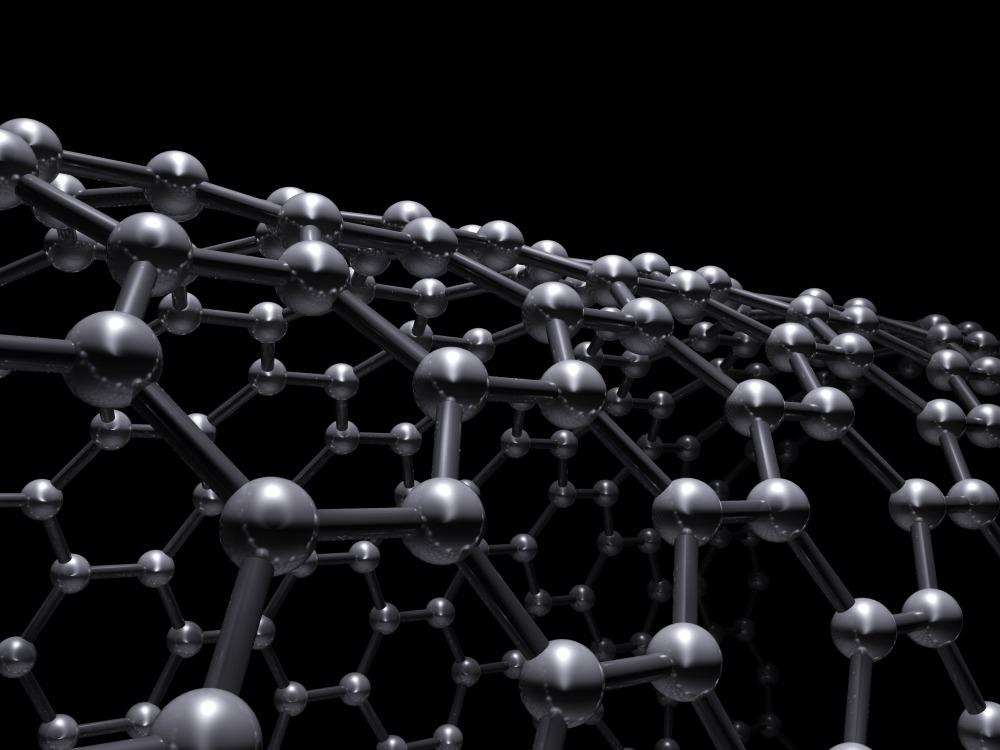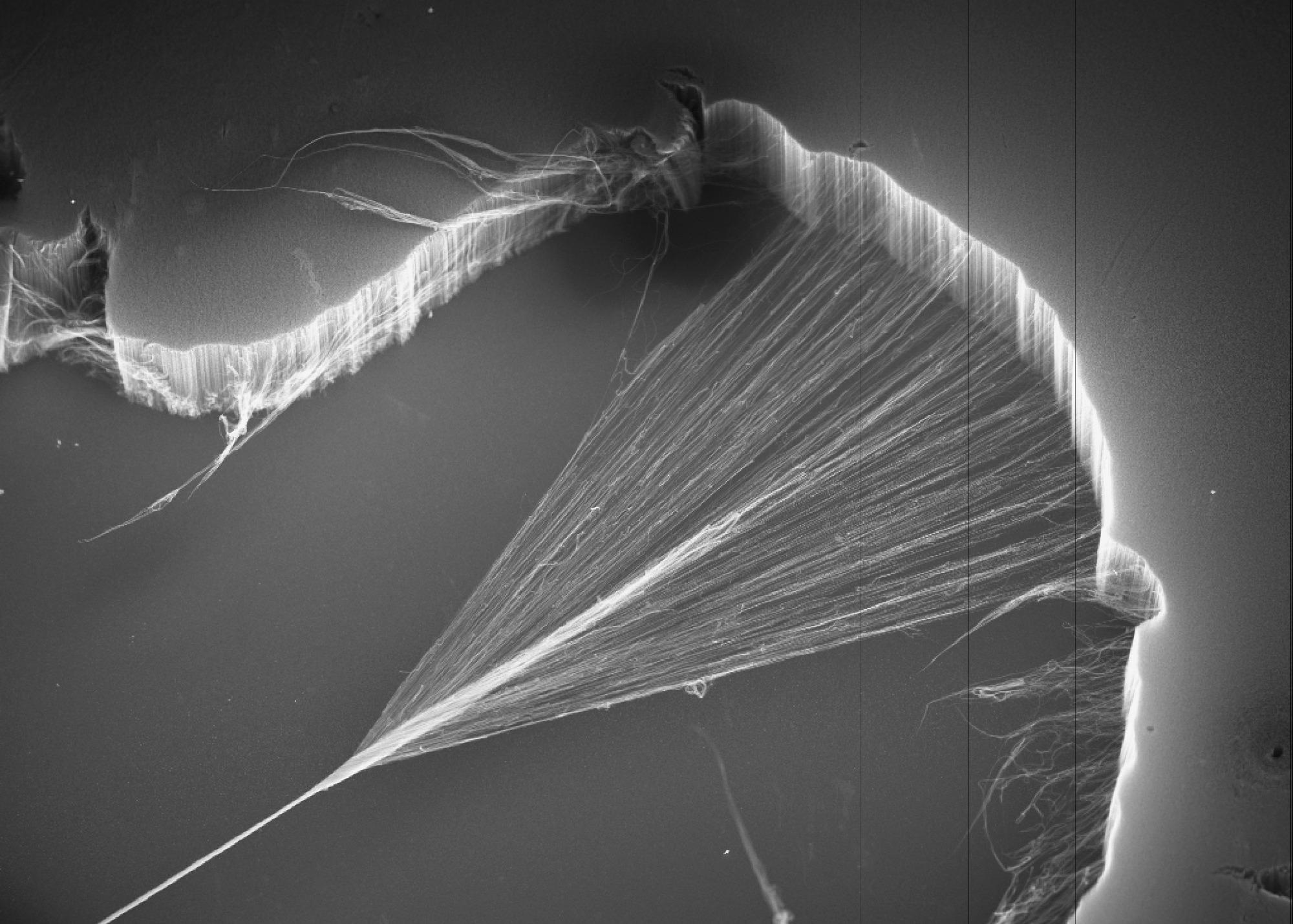Current and future space missions will push the limits of human exploration, taking astronauts further than ever before. New research by Massachusetts Institute of Technology scientists published in the journal ACS Nano considers the role carbon nanotubes may play in space missions.

Carbon nanotube structure. Study: Carbon Nanotubes for Radiation-Tolerant Electronics.Image Credit: Evannovostro/Shutterstock.com
Advanced spacecraft such as NASA’s Orion – which will take astronauts to Mars - are key to this exploration, and these vehicles must ensure crew safety for long periods as they carry the crew to space and ensure that the mission can be aborted in an emergency.
They must also ensure that they safely sustain the crew during space travel and provide safe re-entry despite being subjected to deep space return velocities.
A key safety issue throughout space travel stems from the continuous stream of damaging cosmic radiation that spacecraft are subjected to throughout their journey.
This radiation can damage or even destroy onboard electronics, causing data glitches, prompting vital computer systems to break down, and ultimately putting the mission in jeopardy and the safety of the crew at risk.
The effects of radiation in space are generally understood as either ‘single event effects’ – such as rapid bursts of solar radiation passing through a circuit – or gradual effects that become worse over time, such as charged particles accumulating on the surface of a spacecraft.

Carbon Nanotubes being spun to form yarm. The yarn contains hundreds of thousands of fibres in cross section. Each fibre is one ten-thousandth the diameter of a typical human hair. Image Credit: CSIRO
NASA has reported that these effects have caused incidents of communications and guidance issues, increased error rates, memory errors, and even spontaneous processor resets reported during solar events.
New research reported by the American Chemical Society (ACS) in the ACS Nano journal has showcased the potential of carbon nanotubes to help address this issue, discussing how these nanotubes can be developed and configured to maintain their electrical properties and memory, even after being bombarded by significant amounts of radiation.
The research focuses on the use of single-atom-thick carbon nanotubes’ potential to shield field-effect transistors from potentially damaging radiation, and the nanotubes’ capacity to improve the transistors’ energy efficiency versus standard silicon-based versions.
Most notably, the researchers - Pritpal Kanhaiya, Max Shulaker, and their colleagues - theorized that the nanotubes’ ultra-small size could help minimize the impact of any radiation reaching memory chips that contained these materials.
Because the radiation tolerance for carbon nanotube field-effect transistors had not been studied to any great extent, the team attempted to engineer field-effect transistors able to withstand significant levels of radiation, then construct memory chips that were based on these more radiation-resistant transistors.
Carbon nanotubes were deposited on a silicon wafer which functioned as the semiconducting layer in field-effect transistors.
A range of transistor configurations was tested using different levels of shielding around this semiconducting layer, with thin layers of hafnium oxide and titanium and platinum metal evaluated to assess its effectiveness at shielding from radiation.
This led to some exciting findings. It was discovered that situating shields above and below the carbon nanotubes allowed the transistor’s electrical properties to be protected against incoming radiation up to 10 Mrad, much more than could be achieved via the use of most silicon-based radiation-tolerant electronics.
Shielding placed beneath the carbon nanotubes only saw these protected up to 2 Mrad, a level of protection similar to that of commercially available silicon-based radiation-tolerant electronics.
The next challenge was to find the optimum balance between ease of fabrication and robust radiation protection. In order to find this balance, the team constructed static random-access memory (SRAM) chips using field-effect transistors with bottom shielding.
These memory chips were found to exhibit a similar X-ray radiation threshold to that of silicon-based SRAM devices.
In order to further evaluate the potential of these findings, a comparison was performed using a number of previous studies which had looked at the suitability of carbon nanotube field-effect transistors. This comparison with the literature confirmed that this work had yielded some of the most promising results thus far.
The researchers’ findings suggest that the use of double-shielded carbon nanotube field-effect transistors could lead to the development of next-generation electronics for space exploration, which are more resistant to radiation and therefore more likely to help keep equipment, electronics, and – most importantly – astronauts safe as they continue to explore space.
The lifetime and distance of deep space missions are limited by the energy efficiency and robustness of the technology driving them.
As efforts continue to explore deeper into space and for longer periods of time, it is imperative that equipment and astronaut safety be prioritized and maintained from launch to return. The protection of vital electronic systems from the effects of radiation remains a key component of this work.
References
ACS. ( 2021). Carbon Nanotubes for Radiation-Tolerant Electronics. ACSNano. https://pubs.acs.org/doi/10.1021/acsnano.1c04194
NASA. (n.d.). Orion Spacecraft. https://www.nasa.gov/exploration/systems/orion/index.html
NASA. (2019). Why Space Radiation Matters. https://www.nasa.gov/analogs/nsrl/why-space-radiation-matters/
Tran, L. (2019, June 10). How NASA Prepares Spacecraft for the Harsh Radiation of Space. NASA. https://www.nasa.gov/feature/how-nasa-prepares-spacecraft-for-the-harsh-radiation-of-space/
Disclaimer: The views expressed here are those of the author expressed in their private capacity and do not necessarily represent the views of AZoM.com Limited T/A AZoNetwork the owner and operator of this website. This disclaimer forms part of the Terms and conditions of use of this website.